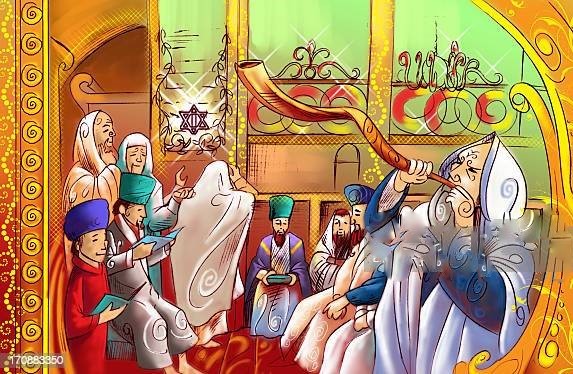SATURDAY PRAYER: HOD-YESHIVAT HAVERIM יְשִׁיבָה חברים – BABYLONIAN TALMUD p109

READING: BETWEEN MIDNIGHT AND DAWN OF SATURDAY
“Nor with Totaphoth.” What are “Totaphoth”? Said R. Joseph: “A balm bandage for sanitary use
(Humrate diqetiphta).” 1
Said Abayi to him: “Then let it be permitted as an amulet made by a reliable expert.” (During
Abayi’s time this difficulty was not solved.) R. Jehudah, however, in the name of Abayi said: 2
“It is an Absayim”(a gold ornament). This is supported in the following Boraitha: “A woman
may go out with a gilded hair-net, and Totaphoth or Sarbitin when fastened to the hair-net.”
What are Totaphoth and what Sarbitin? Said R. Abuhu: “The former are bands that reach from
ear to ear, and the latter bands that reach from temple to temple.” R. Huna said: “The poor make
them of all kinds of colored material, and the rich make them of gold or silver.”
“Nor with a hood.” Said R. Yanai: “I cannot understand what kind of a hood the Mishna means;
is it a slave’s hood that it prohibits and permits a woollen hood, or does it prohibit woollen
hoods and so much more slaves’ hoods? Said R. Abuhu: It seems that a woollen hood is meant.
And so we have learned plainly in the following Boraitha: “A woman may go out with a hood
and head ornament in her yard.” R. Simeon b. Elazar says: With a hood even in a public ground.
“It is a rule,” said he, “that anything below the ‘Shebha’ha’ (hairnet) is permitted to be worn, but
anything above it is not. Samuel, however, said the Mishna alludes to the slave’s hood.
Did, indeed, Samuel say so? Did he not say the slave may go out with the mark (he wears)
around his neck, but not with the mark on his clothes? This presents no difficulty. The former
applies to the mark made for him by his master (in which case there is no fear of the slave
removing and carrying it), while the latter applies to the mark made by himself. What meaning
do you attach to Samuel’s statement? If he permits the wearing of the mark on the slave’s neck
because the master made it and the slave will fear to remove it, could not the master also make
the mark on the slave’s clothes? Yea, but the slave might lose the mark, and for fear of his
master he will fold up his coat and carry it on his shoulders (in public ground). And according to
R. Itz’hak b. Joseph it is prohibited. This is also supported by a Boraitha, which teaches us distinctly that the slave may go out with the mark on his neck, but not on his clothes. In like manner Samuel once said to R. Hanina b. Shila: “None of the rabbis that call on the Exilarch should go out with their insignia on their clothes (on the Sabbath) save you. He would not be angry with you were you to go to him without them (hence, not being a necessary burden, you may wear them or not, as you choose).”
 TUESDAY PRAYER: KETER-SHACHARIT שַחֲרִית MORNING PRAYER
TUESDAY PRAYER: KETER-SHACHARIT שַחֲרִית MORNING PRAYER TUESDAY PRAYER: KETER-TIKKUN CHATZOT תקון חצות-TIKKUN RACHEL & TIKKUN LEAH
TUESDAY PRAYER: KETER-TIKKUN CHATZOT תקון חצות-TIKKUN RACHEL & TIKKUN LEAH TUESDAY PRAYER: KETER- KABBALAH MED-TIKKUN CHATZOT תקון חצות – LESSON WITH RAV MICHAEL LAITMAN
TUESDAY PRAYER: KETER- KABBALAH MED-TIKKUN CHATZOT תקון חצות – LESSON WITH RAV MICHAEL LAITMAN